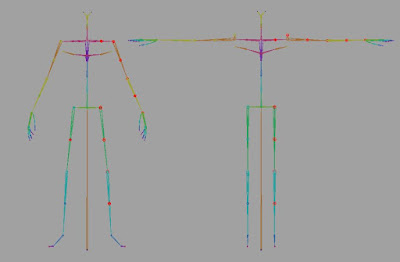Hey,
I work in the games industry as a Senior Technical Artist for Ninja Theory
http://ninjatheory.com/
I started out in March 2001 as a junior animator at Just Add Monsters (what is now Ninja Theory) before moving to Sony Cambridge in June 2004 and moving from animation to tech-art. While at Sony I became a senior artist and did a stint at Guerrilla Games in Amsterdam before coming back as a Ninja in September 2008.
My primary task is character set up - control rigs, deformation, associated tool sets (MEL) but I also look after animation pipelines, set up physics through NaturalMotion Connect, and do a few bits in Unreal Engine too.
I'll mostly be posting about character rigging and scripting, it can be a bit hit and miss looking for rigging info on the net and so this is an effort to try and rectify that in a small way.
It's really important to note that everything on here will, initially at least, be geared towards game characters. This means that the only data that is exported are joints, skin & skin weights and joint rotations/translations. Obviously this has a major impact on setting up characters as everything ultimately has to come down to joints. It's no good setting up some nice deformation using a lattice or a non linear deformer because these things just aren't supported at runtime. It's perfectly possible to use these things within the deformation rig but ultimately everything needs to drive a set of joint translations and rotations. Not even joint scaling is supported!
The plan is to start with a few essentials that anyone already familiar with character set up will know, but I think it's important to lay a good foundation down before tackling more complex problems. Once that is done I'll post up bits and pieces as they occur.







